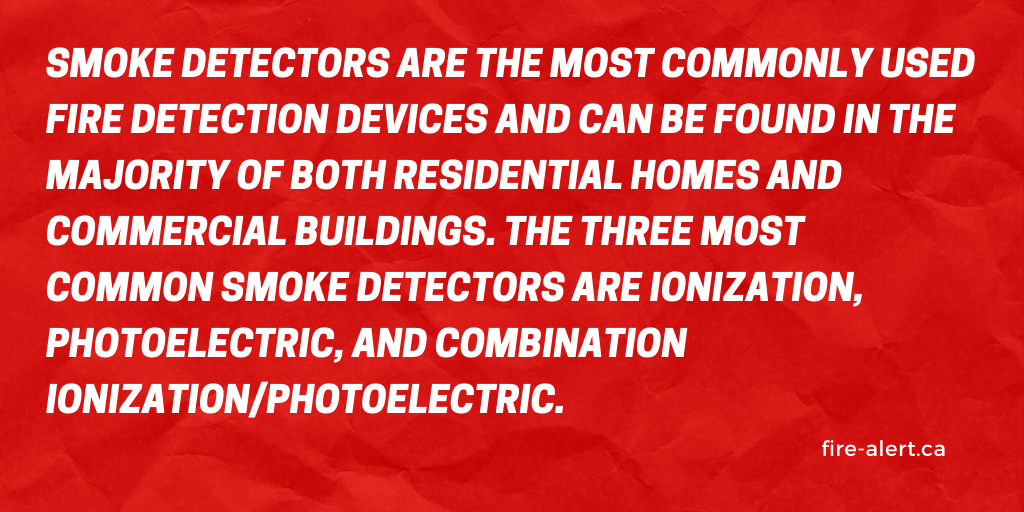The Different Types of Fire Detection
One of the most important aspects of successfully fighting a fire is ensuring that it is detected as soon as possible. Early detection of a fire can not only minimize the damage to the building itself, but can allow for the safe exit of any building occupants. When it comes to how a fire may be detected, the methods available go far beyond your standard smoke alarm that’s installed in your residential home. We’re going to take a look at the different types of fire detection, so you can be fully aware of all the options that are available to you.
Smoke Detectors

Smoke detectors are the most commonly used fire detection devices and can be found in the majority of both residential homes and commercial buildings. The three most common smoke detectors are ionization, photoelectric, and combination ionization/photoelectric. All three of these smoke detectors sound an alarm when they identify smoke so they can notify the building’s occupants. Each of these detectors work differently from the other in the way that they detect smoke.
Alarm New England explains the science behind ionization smoke detectors:
“This type of smoke detector uses ionized particles to detect the presence of smoke. Each ionization smoke detector holds a tiny amount of radioactive material, which is placed between two electrically charged plates. The reaction between these components causes the ionization of air. This in turn creates a current between the two plates. When smoke gets into the detector, the current is disrupted and the alarm is triggered. Ionization smoke detectors are know to work better with flaming fires—these are fires with aggressive, open flames. Their effectiveness with other types of fires, such as smoldering fires, isn’t as great. That is why we have another type of smoke detector.”
Heat Detectors
Heat detectors are most commonly used in the areas where smoke alarms cannot be installed. It is not the most practical to install a smoke alarm in a kitchen which is regularly filled with smoke, or a garage that may often deal with fumes. In these cases, installing a heat detector may be a more practical option.
Kinetixfire.com tells us what we need to know about how heat detectors work:
Heat detectors detect the presence of heat and an increase in air temperature. These detectors have few false alarms but, they take longer to identify a fire than a smoke detector. They’re ideal in situations where smoke detectors may cause false alarms such as steamy, humid, or dusty environments. Infrequently occupied areas like storage facilities, warehouses, or machine rooms also use these types of detectors.
Flame Detectors
Flame detectors are not used in the same way as your smoke alarm or heat detector. Flame detectors are generally used in large industrial process gas heaters and are connected to the flame control system, acting as both flame quality monitors and for flame failure detection. You may also find them in your residential home, connected to your gas furnace or boiler.
Chemicalprossessing.com tells us what the benefits are of flame detectors, especially in the chemical and refining industries:
“Fires and explosions are common hazards in the chemical and refining industries. Unexpected releases of flammable liquids and gases can ignite, sometimes violently, when mixed with air, leading to injury and property damage. Energy-sensing flame detectors can enhance the safety of processes involving flammable materials by triggering an alarm when a fire erupts, thus providing early warning and helping ensure people’s safety.”
Fire-Alert takes pride in equipping homeowners with all necessary fire safety devices to ensure the well-being of families across the nation. Reach out to us using our contact form to find out more.